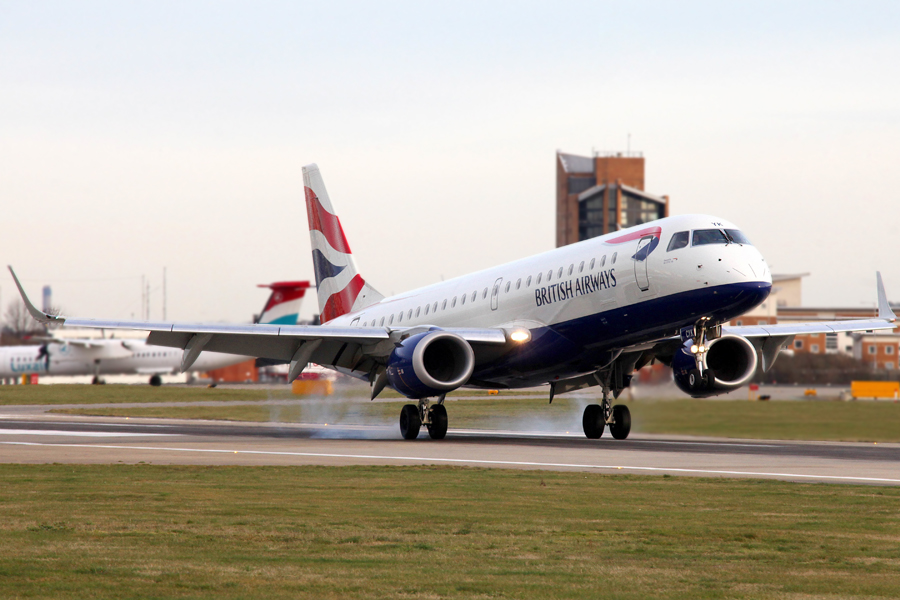
Ventana Home Mortgage
Just another WordPress site
The discrepancy in salary between British Airways (BA) and Ryanair pilots has been a point of contention for many in the aviation industry. With BA pilots reportedly earning £90,000 while their counterparts at Ryanair take home £70,000, there is a notable difference in pay scales. For those earning a salary of just £30,000, this gap can be quite demoralizing. The disparity in pay can lead to feelings of frustration and dissatisfaction among pilots who feel undervalued and underpaid in comparison to their peers at other airlines. This can create a sense of injustice and inequality in the workplace, causing morale to suffer and potentially impacting job performance. As a result, it is important for airlines to address these disparities and ensure that all employees are fairly compensated for their work.

When it comes to comparing pilot salaries across major airlines, there can be significant disparities depending on the company. Factors such as experience, seniority, aircraft type, and base location all play a role in determining a pilot’s salary. For example, pilots at legacy carriers like Delta, United, and American Airlines typically earn higher salaries compared to those at regional airlines. This is due to the larger aircrafts they operate, longer flight hours, and more established routes.
On the other hand, pilots at budget airlines such as Southwest or JetBlue may earn slightly lower salaries but often have more flexible schedules and better work-life balance. Additionally, international airlines like Emirates or Singapore Airlines may offer extremely competitive salaries and benefits for pilots willing to relocate and work overseas. It is important for aspiring pilots to research and compare salaries across different airlines to determine which company offers the best compensation package for their career goals. Ultimately, pilot salaries can vary widely across major airlines, and it is essential for pilots to consider all factors when choosing their employer.
Salary differences among pilots can have a significant impact on their morale and overall job satisfaction. When pilots perceive that their colleagues are earning significantly more or less than they are, it can create feelings of resentment, unfairness, and demotivation. This can lead to a decrease in teamwork and camaraderie among crew members, as well as a lack of trust in the company’s compensation policies. Pilots who feel undervalued or underpaid may also experience higher levels of stress and burnout, as they may feel that their hard work and dedication are not being adequately rewarded.
On the other hand, pilots who are earning significantly more than their colleagues may feel guilty or uncomfortable, which can also negatively impact their morale. Ultimately, salary differences among pilots can create a contentious and divisive work environment, which can have a detrimental effect on overall performance and safety. It is important for airlines to address these disparities in a transparent and fair manner, in order to ensure that all pilots feel valued and motivated in their roles. Open communication, regular feedback, and a clear and equitable compensation structure can help to mitigate the negative impact of salary differences on pilot morale and create a more positive and cohesive work environment.
Pilot pay scales are influenced by a variety of factors, including the level of experience and training of the pilot, the size and type of aircraft they fly, the location of their base, and the overall demand for pilots in the industry. More experienced and highly trained pilots typically command higher salaries than those who are just starting out in their careers. Additionally, pilots who fly larger or more complex aircraft often earn more than those who pilot smaller planes.
The location of a pilot’s base also plays a role in determining their pay, as cost of living and local market conditions can impact salaries. Finally, the overall demand for pilots in the industry can also affect pay scales, with shortages of qualified pilots leading to higher salaries in order to attract and retain talent. Overall, pilot pay scales are influenced by a combination of factors that reflect the unique skills and responsibilities of the profession.
The aviation industry is constantly evolving, with new trends and developments shaping the future of pilots’ careers. One significant trend is the increasing demand for pilots as air travel continues to grow globally. This demand is being driven by factors such as the expansion of low-cost carriers, the retirement of experienced pilots, and the opening of new routes to emerging markets. As a result, job opportunities for pilots are expected to remain plentiful in the coming years.
In terms of salary expectations, pilots can generally expect to earn a competitive income that reflects the level of skill and responsibility required for their role. Salaries can vary depending on factors such as the type of aircraft flown, the employer, and the pilot’s level of experience. For example, commercial airline pilots typically earn higher salaries than general aviation pilots due to the larger size and complexity of the aircraft they operate. Additionally, pilots who fly long-haul international routes may receive higher pay than those who primarily fly domestic routes.
Overall, the salary outlook for pilots is positive, with opportunities for career advancement and increased earning potential. However, it’s important for aspiring pilots to be aware of the rigorous training and certification requirements needed to enter the field. In addition to obtaining a commercial pilot’s license, pilots must also undergo regular medical exams, pass proficiency checks, and meet other stringent requirements set by aviation authorities.
Ultimately, pilots who are dedicated to their profession and willing to put in the necessary time and effort can expect to be well-compensated for their skills and expertise. With the industry’s continued growth and demand for qualified pilots, the future looks bright for those pursuing a career in aviation.

Pay discrepancies can be a significant issue in the workplace, leading to feelings of inequity and dissatisfaction among employees. To address and improve these discrepancies, steps can be taken to promote transparency and fairness in pay practices. One important step is to conduct regular audits of pay rates within the organization to identify any disparities that may exist. This can help ensure that all employees are being compensated fairly for their work. Additionally, implementing clear and consistent criteria for determining pay rates can help prevent bias and discrimination in the decision-making process.
Providing training and education for managers and HR staff on pay equity and unconscious bias can also be effective in addressing and improving pay discrepancies. Furthermore, creating a culture of open communication and feedback can empower employees to raise concerns about pay inequities and work together to find solutions. Finally, establishing mechanisms for employees to report pay discrepancies confidentially and without fear of retaliation can help ensure that issues are addressed promptly and effectively. By taking these proactive steps, organizations can work towards creating a more equitable and inclusive workplace where all employees are valued and compensated fairly for their contributions.